11 Best first-time Europe itineraries for 1, 2, or 3 weeks
Europe is going to be very busy in the summer of 2024 as the world is back to normal and travel demand is higher than ever. One other key factor is that most European currencies are still hovering at lower levels historically compared to the US dollar, which means that Europe will feel somewhat cheap again this year. In fact, according to our World Backpacker Index, European cities like Lisbon, Madrid, and Munich are about 30% cheaper to visit than Boston, Chicago, and New York City. In other words, flying to Europe might seem expensive, but most things will be cheaper once you get there compared to the costs of visiting a large US city.
Below you’ll find 11 of the most popular and best itineraries for a first visit to Europe. Your first visit is not really the time to be different or creative, and the famous destinations tend to be popular for a reason. In other words, it’s kind of silly to visit, say, Bulgaria, if you’ve not yet been to France or Italy. I lay out the best options along with how long to stay in each place as a general guide. I also discuss Mediterranean cruises, which can actually be an amazing way to see a lot of Europe on your first visit, especially if you don’t like going back and forth to train stations and airports every 2 or 3 days.
For a bit of fun you might be interested in the cheapest 5-star hotels in Europe, which start at US$80 per night for really nice hotels. It helps show that if you choose some of the cheaper cities, you can treat yourself to some luxury that you can’t afford in most other places.
This article was last updated in March, 2024.
There are 11 starter itineraries described in detail below
- Classic London and Paris
- England and Scotland
- Paris and Italy
- Mediterranean cruise
- France, Belgium, and Netherlands
- Paris and elsewhere in France
- Italy
- Spain
- Germany
- Switzerland
- Best of cheap eastern Europe
For each itinerary there are suggestions of other destinations that are easy to add on to the main cities.
Note: This article was most recently updated in March, 2024
Building the best itinerary for your first trip to Europe
Below there are 11 popular itineraries for one week in Europe. If you’ve only got a week then choose one of them and assume you’ll return again to conquer more of this amazing part of the world. If you’ve got more time then you can choose from some of the top add-on suggestions for each one.
Start in the most famous cities
Your first visit to Europe is no time to try to be different or edgy. I recommend that you focus on these 5 great cities before you start branching out into cheaper or more obscure places.
Keep your travel days to a minimum
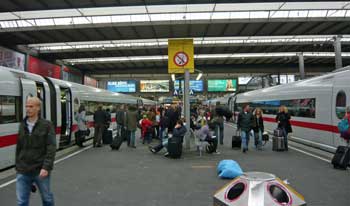
Spend 3 (or 4) nights in almost every major city
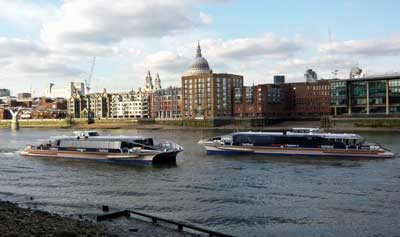
So many first-time visitors are initially planning on spending only 1 or 2 nights in major cities that I wrote a detailed explanation of why 3 nights is ideal for almost all European cities, even if you want to see as much as possible.
3 (or 4) nights will be enough for any city on your first trip
Most first-time visitors are tempted to move too quickly, but it can also be a mistake to move too slowly. It’s really amazing how much you can see in two full sightseeing days. If you spend too long in one city you’ll end up seeing things that are way down your list, while you could be in another city seeing things at the top of your list there.
Choose cities that are easy to reach from each other
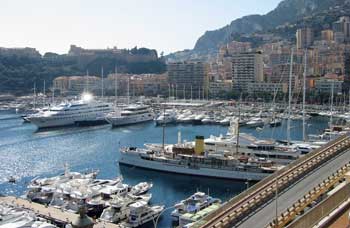
For your first trip it’s best to visit cities that are no more than a 5-hour train ride apart.
Choose cities that are connected by reasonable train rides rather than flights
To build on the point above, finding cheap flights within Europe is easy, but train travel is about a million times more enjoyable and less stressful. You’ll enjoy the train rides almost as much as the cities, so focus on places that are within 5 hours of each other by train.
Start with one of the classic itineraries below, and then add to it if you have more time
If you only have 7 days then you’ll find a list below of classic itineraries that are well-suited to a first visit to Europe. Hopefully you have more than 7 days though, and if you do you can add in one or more of the suggested add-on cities to build an itinerary that appeals most to you.
Best 1-week itineraries for the first time in Europe
Itinerary 1: Classic London and Paris
Fly into either city and take the 2-hour Eurostar train between them
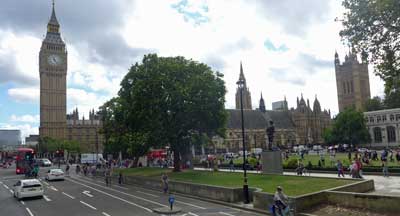
London highlights
- Big Ben and Parliament
- Westminster Abbey and St. Paul’s Cathedral
- Tower of London and Tower Bridge
- West End shows (Broadway equivalent) and classic pubs
- Buckingham Palace and Windsor Castle
Paris is actually far more beautiful than London and the food is famously much better as well. Since Paris gets so many tourists from non-French speaking countries, it’s easy to get by on just English, and the Metro system makes it fast and easy to get around. The architecture of both cities is amazing from the Tower of London, Big Ben, Westminster Abbey to the Louvre and the Eiffel Tower. These cities each pack a huge punch and they are very different from each other as well. Actually, England is arguably the best choice for your first trip to Europe.
Paris highlights
- Eiffel Tower
- Louvre Museum and Museum de Orsay
- Arc de Triomphe and other monuments
- Montmartre neighborhood and Sacré Coeur Cathedral
- Probably the world’s best affordable restaurants and wine
Best add-ons to London and Paris
- Edinburgh (2 or 3 nights, from London)
- Amsterdam (2 or 3 nights, from Paris)
- Bruges and Brussels (2 nights, from Paris)
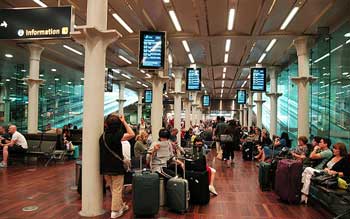
>>>Best one-week London and Paris itinerary in detail
>>>Check London hotel deals
>>>Check Paris hotel deals
Itinerary 2: England and Scotland
- London (3 or 4 nights)
- York (1 night)
- Edinburgh, Scotland (2 or 3 nights)
- Inverness, Scotland (2 or 3 nights)
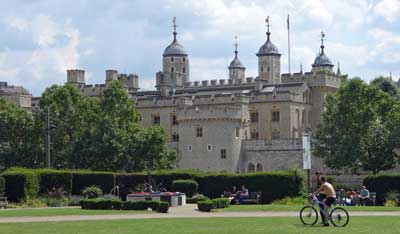
York is a small Roman city with intact city walls and one of the most famous cathedrals in Europe. Edinburgh is not only the capital of Scotland, but it’s easily the second most interesting city in all of Britain. If your time is short, skip York and spend more time in Edinburgh.
If you prefer to focus on the south of England on your first trip then the best option is to go to Bath or nearby Bristol after London. Bath is another of England’s top destinations and it’s a gorgeous city that has been a spa resort for many centuries. It’s also reasonably close to Stonehenge. You can also easily get to Cornwall in England’s southwest corner from Bath, and that’s a whole different and fascinating experience (with nicer weather than up north).
If you’ve got more than a week and want to spend more time in Scotland, especially in the summer months, the place to head to is Inverness. It’s a small town that is considered the gateway to the Scottish Highlands, but it’s an interesting and charming place on its own. You can take day-trips by bus to the highlights of the Highlands including the Isle of Skye and Loch Ness. Between you and me, it’s better to minimize time in Loch Ness or skip it altogether because it’s not one of the more photogenic parts of Scotland and the monster has always been a hoax.
Travel times between the recommended places
- London to York by train: 2 hours
- York to Edinburgh by train: 2.5 hours
- London to Edinburgh by train: 4 hours
- Edinburgh to Inverness by train: 3.5 hours
- London to Bath by train: 85 minutes
Best add-ons to England and Scotland
If you think you want to spend your whole trip in Britain you should have a look at our article on the best itineraries in England, Scotland, and Wales.
>>>Check London hotel deals
>>>Check Edinburgh hotel deals
Itinerary 3: Paris and Italy
- Paris (3 or 4 nights)
- Venice (1 night)
- Florence (2 or 3 nights)
- Rome (3 nights)
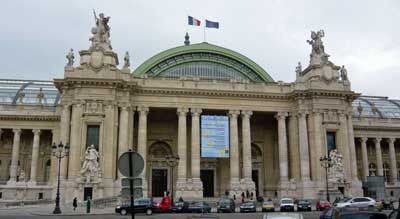
From Paris you can easily fly to Venice (or nearby Treviso) where you should try to spend about 24 hours. Venice is small enough to see in a full day, and so crowded that most people are satisfied to leave after that day. The key is to stay in the main part of the main island so you can enjoy Venice before the cruise passengers and day-trippers arrive, and also after they leave for the day. Two nights in Venice would not be wasted time, and it’s possibly the most gorgeous city in the entire world, but you can see the best of it in a bit over 24 hours.
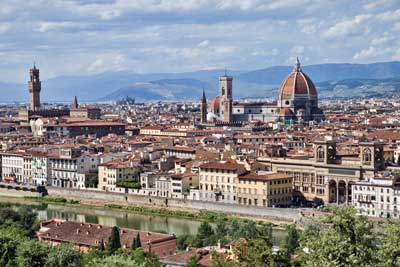
Rome also lives up to the hype and spending a day in the Vatican City will be a highlight even for non-Catholics, but it’s also a crowded and busy city so three days is usually enough for most people. Similar to Paris, Rome is an unusually beautiful city from almost any angle when you are in the historical center. You’ll walk through a stunning piazza (town square) and then turn a corner and you’ll see gorgeous buildings or public statues that are as nice as anything in the museums. Seriously, it’s worth a visit.
Paris to Venice flight: 1 hour 35 minutes
Venice to Florence by train: 1 hour 53 minutes
Florence to Rome by train: 1 hour 16 minutes
You can of course instead fly from Paris to Rome and then go north to Florence and then to Venice and fly home (or back to Paris) from there, and it would be just as enjoyable.
Best add-ons to Paris and Italy
France
- Nice/Cannes/Monaco (2 or 3 nights)
- Avignon (2 nights)
- Bourges (2 nights)
- Bordeaux (2 nights)
- Aix-en-Provence (2 nights)
- Reims (2 nights)
- Dijon/Burgundy (2 nights)
Italy
- Milan (1 or 2 nights)
- Lake Como (2 nights)
- Siena (2 nights)
- Cinque Terre (1 night)
- Naples/Sorrento/Amalfi Coast/Pompeii/Capri (3 to 5 nights)
- Sicily (3 to 4 nights)
>>>Much more information in this article about the best France and Italy itineraries
>>>Check Paris hotel deals
>>>Check Venice hotel deals
>>>Check Florence hotel deals
>>>Check Rome hotel deals
Itinerary 4: Mediterranean cruise
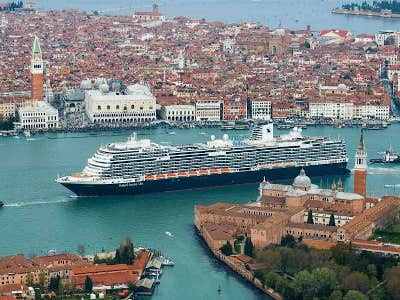
In spite of the reputation of cruises to be floating buffets, they can actually be an excellent way to visit a great number of amazing European cities in a short time. The ship typically is in port from the early morning until mid evening, often giving you the opportunity to have dinner in the city (unlike Caribbean cruises). Better still, the cruise ports are often near the center of town, so you can just walk off the ship and do sightseeing on foot or by public transportation.
Mediterranean cruises usually start at 7 nights but can go up to 3 weeks, which can provide an amazing tour of the entire region without having to pack and repack your bags more than once. They also can provide excellent value, especially compared to the price of taking trains or flights and finding new hotels in every destination.
Most popular Mediterranean departure ports
Barcelona, Spain – It’s an easy port to reach. Ships generally go from Barcelona with stops in France and then Italy.
Rome (Civitavecchia), Italy – The port isn’t very close to Rome, but it’s easy to get back and forth. Ships go west to France and Spain as well as south around the tip of Italy and then on to Croatia, Venice, and to Greece.
Venice, Italy – The cruise ships no longer dock close to the best tourist areas, but it’s easy enough to visit Venice for a day or two before boarding a ship. Ships starting in Venice go south and then head west and to Rome and then to France, or they go south to Croatia and then head east to Greece.
Athens, Greece – The cruise port of Piraeus is just south of Athens and easy to reach. Ships from Athens usually head west towards Croatia, Italy, France, and Spain, but there are also ships that visit Greek islands and Turkey.
>>>Check for deals on Mediterranean cruises
Alternative to consider: a river cruise
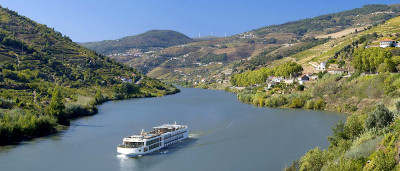
Amsterdam, Budapest, and Prague are some of the most popular river cruise ports, but there are dozens of others including many smaller towns in France where few other tourists will be when you stroll off the ship. There is little or no entertainment on the river cruise ships, but passengers don’t miss it because the entire day and into the evening is spent just steps from local cultural offerings and restaurants.
>>>Check for Europe and river cruise deals
Itinerary 5: France, Belgium, and Netherlands
Paris to Brussels: 1 hour 22 minutes
Brussels to Bruge: 58 minutes
Bruges to Amsterdam: 2 hours 45 minutes
Amsterdam to Paris: 3 hours 17 minutes
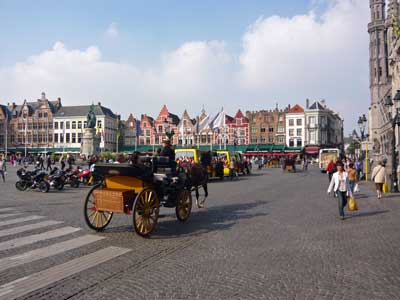
Spending 4 nights in Paris and 3 nights in Amsterdam would be a great trip, but if you want to see something else you’ve got a couple options in between. My advice is to spend an afternoon looking around the Grand Place (main square) in Brussels and then hop a 58-minute train ride to Bruges for a night or two. Brussels isn’t a great tourist city, but Bruges really is so it’s a better option for most people. Whatever you choose out of this group, you can be back in Paris on another high-speed train for your flight home.
Best add-ons to France, Belgium, and Netherlands
- Luxembourg City (1 or 2 nights)
- Cologne, Germany (1 or 2 nights)
- London (3 or 4 nights)
- Interlaken, Switzerland (2 or 3 nights)
>>>Check Paris hotel deals
>>>Check Bruges hotel deals
>>>Check Amsterdam hotel deals
Itinerary 6: Paris and elsewhere in France
- Paris (3 or 4 nights)
And a choice of:
- Nice/Cannes/Monaco (2 or 3 nights)
- Avignon (2 nights)
- Bourges (2 nights)
- Bordeaux (2 nights)
- Aix-en-Provence (2 nights)
- Reims (2 nights)
- Dijon/Burgundy (2 nights)
- Normandy (2 nights)

While Nice is a wonderful tourist city for a look at the French Riviera, the other larger cities of Lyon and Marseilles are probably better saved for a future trip because they are light on key sights compared to many smaller towns. Wine lovers can rent a car or take trains into Bordeaux or Burgundy. Since you can get between most of these towns by train in 2 hours or less, spending only 2 nights in each one is a reasonable option if you want to see a lot in a short time.
Normandy is an interesting choice and easy to reach in only about two hours by train from Paris. Some visitors like to see the famous WWII beaches and memorials, while others (especially in summer) like to check out one or more of the beach-resort towns. Deauville is one of the more famous of those, and it’s also famous for its horse race track and as one of the epicenters of the industry in Europe.
Best add-ons to Paris and elsewhere
- More France, of course
- London (3 or 4 nights)
- Interlaken, Switzerland (2 or 3 nights)
- Amsterdam (2 or 3 nights)
>>>Check Paris hotel deals
>>>Check Nice hotel deals
Itinerary 7: Italy
Rome to Florence: 1 hour 16 minutes
Florence to Venice: 1 hour 53 minutes
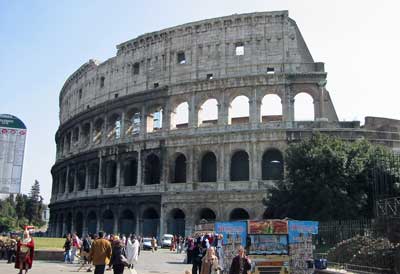
Venice is small enough that you can see the main sights in about 24 hours, and it’s so insanely crowded that many people tire of it after about a day as well. It’s better to pay more for a hotel to be on the main island and visit quickly than to save money with a hotel on the mainland where you’ll be in crowds going back and forth as well. Florence is the most relaxing of the 3, and also a great base for side trips to Pisa, Siena, and Cinque Terre, just to name a few.
Going to Italy? Here are the best first-time Italy itineraries for 3 days to 2 weeks (in much greater detail)
Best add-ons to Italy
- Milan (1 or 2 nights)
- Lake Como (2 nights)
- Siena (2 nights)
- Cinque Terre (1 night)
- Naples/Sorrento/Amalfi Coast/Pompeii/Capri (3 to 5 nights)
- Sicily (3 to 4 nights)
>>>Check Rome hotel deals
>>>Check Florence hotel deals
>>>Check Venice hotel deals
Itinerary 8: Spain
Madrid to Barcelona: 2 hours 30 minutes
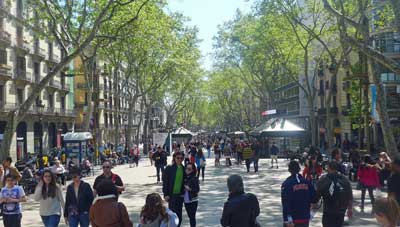
A huge part of Spain’s tourism industry is built around its southern beaches and islands such as Ibiza, Mallorca, and Tenerife (in the Canary Islands). For most people it’s best to ignore those places on your first trip because none of the beaches are special enough to spend days on them compared to the culture of the cities.
Best add-ons to Spain
By popular demand, I’ve added a full article on where to go in Spain with itineraries from 7 to 10 days up to two weeks.
>>>Check Madrid hotel deals
>>>Check Barcelona hotel deals
>>>Check Lisbon hotel deals
Itinerary 9: Germany
Berlin to Munich: 6 hours 2 minutes
Munich to Rothenburg ob der Tauber: 2 hours 56 minutes
Munich to Füssen: 2 hours 4 minutes
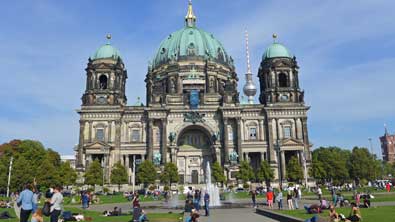
Those two cities are the keys to a Germany visit, and after that you’ve got a wide variety of choices. I cover most of the popular choices in my article on where to go in Germany, which covers several smaller towns that are major highlights.
Best add-ons to Germany
- Cologne (1 or 2 nights)
- Hamburg (2 or 3 nights)
- Amsterdam (3 nights)
- Prague (3 nights)
- Salzburg (2 or 3 nights)
- Vienna (3 nights)
- Interlaken, Switzerland (3 nights)
- Lucerne, Switzerland (2 or 3 nights)
>>>Check Berlin hotel deals
>>>Check Munich hotel deals
Itinerary 10: Switzerland
- Interlaken (3 nights)
- Bern (1 night)
- Lucerne (3 nights)
Zurich Airport to Interlaken: 2 hours 10 minutes
Interlaken to Bern: 53 minutes
Bern to Lucerne: 1 hour 50 minutes
Lucerne to Zurich Airport: 1 hour 3 minutes
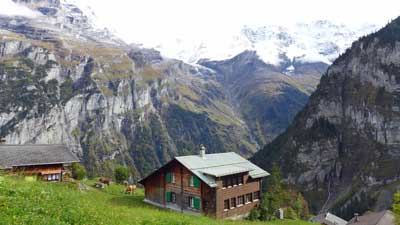
Interlaken is the best hub for the most dramatic Alps views and experiences. The one-hour cable car ride up to the Schilthorn observation deck is something you’ll never forget, and the only thing that might be more dramatic is the train ride up to the Jungfraujoch station, which is the highest in Europe. Lucerne is almost as beautiful with a scenic lake at its heart and also great mountaintop views nearby. If you do want to see a Swiss city then the capital of Bern is the most interesting and photogenic on a short visit. Read more about where to go in Switzerland for even more ideas.
Best add-ons to Switzerland
>>>Check Interlaken hotel deals
>>>Check Lucerne hotel deals
Itinerary 11: Eastern Europe’s best cheap cities
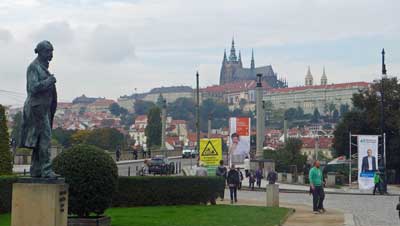
Each of these cities is beautiful and historic, but English is less widely spoken so they can also be quite a bit more challenging for a first-time visitor. Another difficulty is that the trains between them are still quite slow compared to the high-speed rail in the West, so it takes most of a day from one to another, and a bus is often a better choice. I cover this best cheap Europe itinerary more fully in the linked article.
Prague to Budapest: 6 hours 41 minutes
Budapest to Krakow: 9 hours 54 minutes (flying might be better)
Best add-ons to cheap Eastern Europe
- Cesky Krumlov, Czechia (2 nights)
- Ljubljana, Slovenia (2 or 3 nights)
- Split, Croatia (3 nights)
- Belgrade, Serbia (2 or 3 nights)
- Sarajevo, Bosnia and Herzegovina (2 or 3 nights)
- Sofia, Bulgaria (2 or 3 nights)
>>>Check Prague hotel deals
>>>Check Budapest hotel deals
>>>Check Krakow hotel deals


Thank you for the detailed reply. You bring up really good points. I showed this to my partner, and we decided to to do 3 nights in Paris, 2 nights in Amsterdam, and 3 nights in Rome.
For the rest of it though, my partner is thinking of making it into a really long road trip. For example, from Amsterdam down to Luxemburg, Zurich, and then Venice, or something like that.
Do you think it will be relatively easy? Do you have recommendations for cross country car rentals, or good places to stay for trips like this?
Thanks again!
Janice,
Renting a car to get around Europe can be great if you are planning to visit wine regions and small towns and natural sights, but to get between big cities a car will be more of a hindrance than a help. Fuel is very expensive but the main problem is the parking. All of those cities were designed and built long before the car, so parking is very expensive and often hard to find the closer to the city center you get. You have to stay out in the suburbs in order to find hotels with free parking, and if you stay there you then have to take public transportation for maybe an hour to get into the area with the sights, or you can drive (which will be confusing) and then pay maybe €20 per hour to park in that area.
Trains, on the other hand, are very easy and they go everywhere you want to visit. As someone who grew up in the US I wasn’t used to train travel like that, but once I tried it in Europe I love it and I find it far preferable to driving. Sorry this probably wasn’t the answer you were looking for. Let me know if you have any other questions. -Roger
Hi, Thank you for the article. My husband and I are going to Europe in July for the 1st time. We have 2 weeks. Landing in London. Spending 4 nights there then 3 nights in Paris. We plan to venture out from there. Do you recommend getting the Eurorail pass?
thank you
Tamie
Tamie,
I’ve written a LOT about whether to get a Eurail Pass and most likely it won’t be good value for you. First off, to get from London to Paris you have to take the Eurostar train, which isn’t part of the Eurail system (although pass holders can get a 25% discount if you buy from the same place). Then once you leave Paris you’ll only have a week left, and in that time you probably don’t want to visit more than maybe 3 total cities. Eurail Passes generally start at 5 travel days and go up from there, and many trips within France require you to buy an expensive seat reservation, so rail passes aren’t great value WITHIN France in general.
First off, I would buy the Eurostar tickets as soon as possible to get the best price. I would also decide which other places you want to visit and then buy train tickets soon for those as well. Train tickets between big cities in Europe go on sale 3 or 4 months out at low prices and the prices go up as more seats are sold. So it’s true that buying tickets on travel day is usually very expensive. A rail pass is a good way to get around that, but only on longer trips.
From Paris you could get to Amsterdam in a bit over 3 hours and from there to Berlin in a bit over 5 hours. Or you could go from Paris to Barcelona in 6 hours and then to Madrid in two hours from there. Or you might fly from Paris to Venice and then after one night there you could take a train to Florence for 3 nights and then to Rome for 3 nights. In any of those cases it’s best to buy your tickets at least two months in advance if you can, especially for July, which is a busy month in that area. Let me know if you have any other questions. -Roger
Hi Roger,
Thank you for the amazing website. We are planning a trip to Europe in mid to late June for a week. We will be travelling with two kids, aged 5 and 8. We are thinking of paris and Amsterdam (one week) or rome, Florence and venice (one week). This will be our first trip to Europe, and we would like our kids to have a good experience as well. Do you have any preferences regarding which one of the cities would be better with kids. Also do you think paris and Amsterdam is doable in one week. Thanks again
Shefali,
You are welcome. You could definitely do either of the itineraries you mentioned. Paris for 4 nights and then a 3-hour train ride to Amsterdam for 3 more nights is perfect. Or you could do Rome for 3 nights and then Florence for 3 nights and then one night in Venice. That is the classic first-time to Italy itinerary.
My guess is that your kids are still too young to really appreciate the cultures in these places, but definitely old enough to enjoy the sights and activities and they will remember this trip their whole lives. I was 4 years old on my first Europe trip with my family and 8 years old for my second, and they were the greatest experiences of my childhood.
All of those cities should be interesting to kids because there are unusual things to see and experience in all of them. Amsterdam has its canals and Paris has the Seine River and interesting buildings and statues everywhere you look.
Honestly I think Paris and Amsterdam OR Italy will be wonderful, and I don’t have a strong preference to push you to one or the other. And they are very easy to get between on the high-speed trains as well. Let me know if you have any other questions. -Roger
Dear Roger,
First of all, I hope you know that you are an excellent person. Thank you so much for such in depth articles; they’re very helpful. When I found your website, my anxiety for planning for my two week trip to Europe was drastically reduced. Thank you so much!
Based on Itinerary 3 (and other inclusions) on this article, I have worked out the following itinerary for our trip in July:
3D2N Paris -> Brussels
2D1N Brussels -> Amsterdam
2D1N Amsterdam -> Venice
2D1N Venice -> Florence
3D2N Florence -> Rome
3D2N Rome -> Barcelona
3D2N Barcelona
Can you please let me know:
1. Is it a reasonable amount of time to spend in each location?
2. Do the travel times between each city make sense? Should they be in different orders?
3. Any other recommendations for honeymooners who are going on their first trip to Europe ever?
Thank you in advance for your reply.
Janice
Janice,
That is nice of you to say, and I’m happy to help. I would recommend spending 3 nights in each city you visit, although Venice is small enough (and so crowded) that 1 or 2 nights is enough. Most of your train rides are about two hours, and that helps a bit because it means you can get from your hotel in one city to the hotel in the next city in about 4 hours, which still leaves some sightseeing time on that day. But your flight from Amsterdam to Venice will take probably 6 or 7 hours from one hotel to the next, and by the time you arrive in Venice you’ll be pretty tired and it’ll be late afternoon. If you go on this schedule you’d have to leave Venice the next morning so you wouldn’t have time to see much. It’s really better just to think of each of your stops as a number of nights, because each time you switch cities you’ll lose a good chunk of the day. And based on your totals you have 18 days and only 11 nights.
If you are locked into 11 days then I would skip Brussels and save Barcelona for a future trip. Brussels is kind of a dud anyway compared to the others, and that flight from Rome to Barcelona will also take most of your day when you count airport transportation and security and all that. So I’d do Paris for 3 nights then Amsterdam for 3 nights and then Venice for one night and Florence for two nights and Rome for 3 nights.
Again, your route is quite efficient and the train trips are all around two hours or so, except for the flight from Amsterdam to Venice and the flight from Rome to Barcelona.
Especially since this is your first trip to Europe AND your honeymoon I would definitely try to go more slowly as a suggest. Taking trains from one city to another in Europe is fairly easy even if you only speak English, but it’s a big hassle to keep checking in and out of hotels and having to hustle back and forth to train stations and airports. The reason I recommend 3 nights so strongly is that gives you two full sightseeing days in each city, which is enough time to see all of the best highlights. If you spend only 1 or 2 days in each city you will literally feel like you spent half your honeymoon packing and unpacking and riding trains and planes and going back and forth to train stations and airports. I’m happy to help more if you have any other questions. -Roger
Hi Roger, thanks for the amazing article.
I am planning for honeymoon to europe in Nov , around 20 days. we are from myanmar and probably will disembark from Singapore. Must see destination is spain (for la liga match), portugal, rome, venice and paris. and of course other places.. too many, I can’t really choose. I would like to get your expert knowledge and idea for iteniery. thanks in advance and looking forward.
Fiona,
Congratulations in advance. That should also be a wonderful trip. As you’ve probably seen in the article, I strongly suggest spending 3 nights in almost any city you visit, because going from a hotel in one city to a hotel in another city will take up a good part of your day, and you don’t want to do that every other day. So with 20 days or so I would recommend 7 cities. Venice is small enough to enjoy in a day or so if you are in a hurry, but almost every other city that you’ll want to stop in is large enough that having two full sightseeing days will be ideal.
You definitely want to visit Paris, and the fastest Italy visit that I would recommend is 3 nights in Rome, 3 nights in Florence, and 1 night in Venice. That is 10 days right there, so you’ve got about 10 more days for Spain and possibly Portugal. My guess is that you probably want to stop in Barcelona for a few days to visit Camp Nou, and if you do that be sure to get your tickets as early as possible. In those famous European stadiums like that it’s almost impossible to just buy a ticket once you get there, even for a place as large as that one. Spain in November will be lovely because it’s still a bit warm, where even Italy will be pretty chilly by then. The shortest visit to Spain I recommend is 3 nights in Madrid and 3 nights in Barcelona. If you did that then you’d be up to 16 days already, and you’d have 4 days or so left to either visit Lisbon (I wouldn’t go anywhere else in Portugal unless you had more time), or elsewhere in Spain.
One challenge is that the only train between Madrid and Lisbon goes overnight, and it’s not much fun so flying is better. On the other hand, you could take a high-speed train from Madrid to Grenada or Seville or the commuter train from Madrid to Toledo, or a fast train from Barcelona to Valencia. You could do Seville and Grenada in two nights each if you wanted because those are more compact.
One way to do it would be to fly into Paris and then take the train to Barcelona and then to Madrid and elsewhere in Spain. And then fly to Venice from there and then take the train down to Florence and to Rome for your final stop. Those are my best recommendations and I’ll be happy to help more if you have questions. -Roger
Hi Roger, At salzburg can we see any snow laden peaks like the one at Schilthorn or Jungfrau ?
Nawal,
Unfortunately, there are no high peaks near Salzburg like those others. The city of Salzburg itself is just gorgeous and part of that is because it’s in the foothills of the Alps and there is a lovely fortress overlooking the historic center of town, but there are no dramatic Alpine views like those others in the area. -Roger
Hi Roger,
I am planning for 2 weeks trip to Europe with my family from Singapore.
Would like to take a advise from you whether it is good to go on our own or through any travels.
Secondly we would like to cover majorily Switzerland,Italy,Paris and amsterdam. travelling arnd these countries by trains is it possible.
So would like to have a proper schedule of which country to travel first…is it advisable that we first take a flight to Zurich or rome
and then travel to other by train…
and then to paris and tnd lastly amsterdam..
please suggest
thanks
Ramya,
If you are asking whether you should book this yourself or book a tour, I would book it yourself for sure. Getting between these cities on your own will be easy for anyone from Singapore, and all of the important signs are in English in all of those places.
That is a lot to see in two weeks, but it could be done if you don’t mind spending almost every other day going between cities. The most efficient way of doing it would be to fly into Rome and spend 3 nights there, and then take the train to Florence for 2 or 3 nights, followed by a train to Venice for 1 night. Then you can take a train from Venice to Interlaken to see the highlights in 2 or 3 days. From there you can take a train to Paris for 3 nights and then a train to Amsterdam for 3 nights. As you can see, the number of nights I recommend do add up to more than two weeks, so you’d have to cut a couple days if you couldn’t add a couple days to your overall trip.
Trains are definitely the way to go and many of those rides you’ll be taking are quite scenic. The further in advance you buy the train tickets the cheaper they will be. I’m happy to help with more information if you need it. -Roger
Hi! My husband and I are planning our first and maybe only trip to Europe for 9-10 days in June. We think we’d like to go to Rome and Paris. Is this a good plan? I know you recommend just doing Italy but I’m not sure we’re that interested in Florence or Venice? We are definitely on a budget. We don’t ven know where to begin!!!
Julie,
You could definitely spend 9 or 10 days in Paris and Rome and you wouldn’t get bored, but I would consider adding at least one other city. Normally on trips like this we will arrive in a city and then go through our list of places and things we want to see, and it’s often surprising how much we can see in only 2 or 3 days. If you are in Paris for 5 days you might find that on your last day you’ve already done everything on your list and you are either just walking around (which can be pleasant) or going to see things that are WAY down on your list. On the other hand, if you also included, say, Venice, you could spend that same day seeing all of the things on the TOP of your Venice list instead of the things on the bottom of your Paris list.
Either way, it’s most efficient to fly between Paris and Italy. Another thing that is worth mentioning is that Rome is an amazing city but it can also be exhausting. For example, just trying to cross a busy street can be draining because drivers will never stop and waive you across, so you have to kind of just push through. And all of the justifiably famous attractions such as the Coliseum and Vatican Museum are VERY crowded. My normal recommendation is to spend 3 days in Rome, which is enough time to see the main highlights, but not so much time that you start to hate the place. Paris, on the other hand, is much more organized and quite pleasant, even if it is also crowded.
You might have a quick scan of another article I wrote discussing what I consider to be Europe’s 5 greatest tourist cities. Venice is on there and if I ranked them it might be number one because it’s unlike any other place on earth, AND it’s gorgeous. You can enjoy Venice in only about 24 hours as long as you stay on the main island and take advantage of walking around in the morning and evening when the crowds of day-trippers are gone.
So if you just want to do Paris and Rome I would recommend 5 days in Paris and 4 days in Rome, with a flight between them. If you also want to include Venice I would do 4 nights in Paris and then a flight to Venice (or nearby Treviso Airport, which can sometimes be cheaper) and then 1 or 2 days in Venice and then 3 or 4 days in Rome. The train from Venice to Rome take about 3.5 hours, with a stop in Florence about halfway in. Florence is another lovely city that is also less chaotic than Rome or Venice, and many people enjoy it the most. So you could even do 3 days in Paris, 1 day in Venice, 2 or 3 days in Florence, and then 3 days in Rome. I’m happy to help with other questions if you have them. -Roger
Hi Roger,
Thank you for a really awesome,value adding website!
We are planning a 2 week trip in September and would like to see Italy, France and Switzerland at the very least. Barcelona if possible?
Is it best to do a bus tour or could we go it alone? Cities to see would have to be Paris, Rome, Venice, Interlaken ans Barcelona.
First trip and super excited so your help will be greatly appreciated
Liez,
I’m glad you find this helpful. You should definitely plan this trip on your own and plan on mostly taking trains rather than buses. Trains between these cities in Europe go almost twice as fast a buses and they are far more comfortable as well, with better scenery. If you only have two weeks I would save Barcelona for another trip. Unfortunately it’s out of the way for this, and it would be too much of a rush.
I would start in Paris and spend 3 or 4 nights there. Then take the train to Interlaken and spend 3 days there. Then take the gorgeous train ride from Interlaken to Venice (with a change in Milan) and spend 1 or 2 nights there. Then take the 2-hour train ride to Florence and spend 2 or 3 nights there. I know Florence wasn’t on your list, but it’s one of the “Big 3” in Italy for a reason and many people find it the most interesting and pleasant of Italy’s tourist cities. It’s the heart of Tuscany and so the food there is usually better than anywhere else in Italy. Then take the 90-minute train ride to Rome for your last 3 nights. From Rome hopefully you can book a flight all the way home, but you can also book a cheap flight back to Paris and then return on your round-trip flight from there. The one thing to be aware of is that most of the cheaper flights from Rome to Paris will fly into Orly Airport, and your flight home is probably going to be out of Charles de Gaulle. Getting between the airports takes time and isn’t too cheap, so it’s probably best to fly from Rome to CDG and then home.
Barcelona is really wonderful, but so is Madrid and many other places in Spain. Hopefully you’ll get the travel bug and want to explore that country more fully in the near future. Those train tickets I mention will be fairly cheap if you buy them at least two months or so in advance. And getting around by train in those countries is very easy, even if you only speak English. I’m happy to help more so let me know if you have other questions. -Roger
It’s been fun reading all the advice you provide. I am taking my two teenagers on a lifetime trip to Europe we’ve been talking about a backpacking trip since they were little so the time has come where my son is getting ready to start college in the fall and we are going for 14 days Landing in Paris in late June to July. He definitely wants to do Italy and we’re not sure what else it would be fun to get in one town in Germany and maybe even Amsterdam I’m not sure that’s going to work out however because my kids would like to see the sites in Paris of course. My son has asked to stay at a coastal town in Italy. We of course are interested in Rome and Venice. Any suggestions on a good coastal town town? Thank you in advance for your help
Liza,
If you’ve got two weeks you can do most of what is on your list, but maybe not all of it. If you land in Paris you should spend at least 3 days there, or perhaps even 4 days, but especially if you land in the morning then 3 days should be enough. As great as the train service is in Europe, it’s still best to fly to Italy, so it’s probably best to save that for your final week. I would then take the high-speed train from Paris to Amsterdam, which takes a bit over 3 hours. I’d recommend 3 nights in Amsterdam as well. If you included Amsterdam it would be a bit tough to also include a city in Germany, although it could be done. In my opinion the most interesting German city is Berlin and I would spend at least three days there. You could conceivably take a train from Amsterdam to Cologne for a taste of Germany. Cologne is an interesting city with a famous cathedral and an interesting historic area, and you can see the highlights in about a day.
But it’s probably best to fly from Amsterdam to Venice (or nearby Treviso) and start your Italy portion. You can enjoy a visit to Venice in about 24 hours as long as you stay in the main island. Then you can take a 90-minute train ride to Florence for 3 days and then a 2-hour train ride to Rome for your final 3 days. That is the fastest trip to Italy I recommend. The best Italian tourist towns on the coast are south of Rome, including Sorrento, Positano, and Amalfi, and I don’t think you’ll have time to visit one of those. But you should have time to visit Livorno or one of the other coastal towns near Florence while you are there. And Rome is even closer to the coast, although none of the towns near there are tourist hubs for foreigners. And of course, any town that actually has a beach (as opposed to cliffs) will be packed in July and very expensive as well. I hope this helps. Let me know if you have any other questions. -Roger